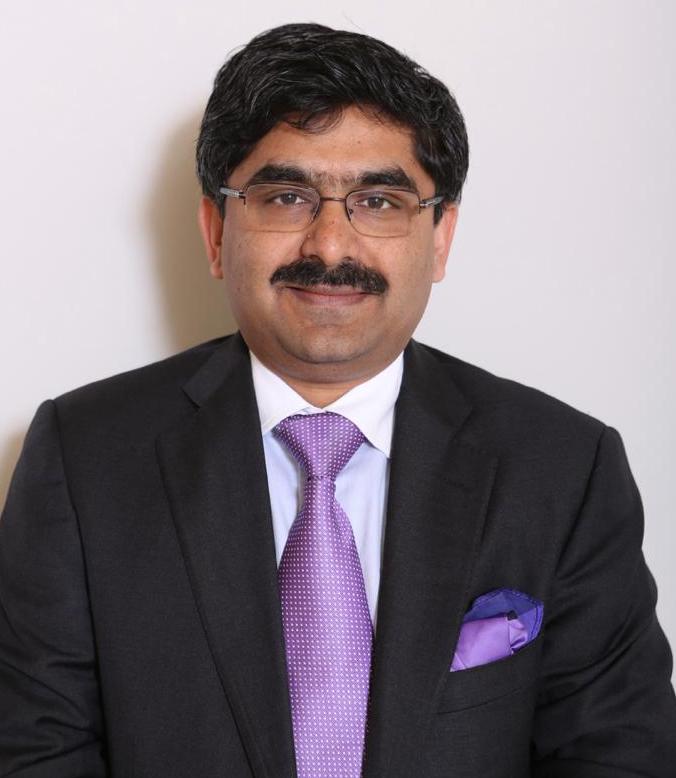Fiscal policy, macro and sector reforms to fire the growth engine
Government of India released the e-book format of the economic survey, which is dedicated to the corona warriors – who saved lives and livelihoods. Amidst this global health and economic crisis, India was guided by the principle of saving lives being most critical for the country, for which purpose short-term economic pain was also borne. The survey illustrates that the expected cases and deaths are lower than expected owing to proactive measures and stringent implementation – India avoided 37 lacs cases and 1 lac deaths. However, the economy is now entering the early stages of post-pandemic cycle, indicating a V-shaped economic recovery for India.
During H1 for FY21, the pandemic has significantly affected economic indicators, as the economy faced disruptions with attendant job and income insecurity. The resultant trough in the demand curve now needs to be boosted, in line with various supply-side measures introduced by the Government over the past year. As economic activity inches closer to pre-COVID-19 levels, measures to boost demand will bring back the growth momentum, with GDP growth expected at 11 per cent in FY22.
Going forward, to ensure stability the quality of asset classes, especially for infrastructure projects, will need close monitoring, as COVID-19’s impact is expected to exacerbate the Non-Performing Assets (NPA) issue.
The journey towards Aatmanirbharta would depend on enhanced investments, for which the country will have to focus on a stable interest rate and a stable tax regime. The road ahead would also need an increase in employment opportunities to leverage the country’s demographic dividend. The next phase of development would depend on inclusive and equitable growth, with cross-sectoral and cross-regional prosperity. Based on the green shoots in H2 FY21, there is reason for optimism.
India’s V-shaped recovery would support road to Aatmanirbharta
As the world dealt with an unprecedented health emergency, which soon transformed into an economic crisis, India focused on saving lives and livelihoods. The country’s early, intense lockdown helped save lives, and preserve livelihoods and the Government’s support package aided economic recovery in the medium to long-term, with a mix of fiscal support and structural reforms. Additionally, the clarion call of Aatmanirbhar Bharat enthused the industry with the hope of positioning India differently in the global order, in the post-COVID-19 era.
The advance estimates for FY:2020-21 state that the economy is expected to stage a resilient V-shaped recovery in H2:2020-21. A decline of real GDP by 7.7 per cent for the whole FY:2020-21 indicates a modest decline of 0.1 per cent in GDP growth in second half of the year.
Faster normalization of business activities amid gradual lifting of restrictions, higher festive and pent-up demand and policy support is expected to translate into a faster-than-anticipated economic recovery over the second half. This is supported by a strong rebound seen in several high frequency indicators in Q3: FY 2020-21.
On the demand side, the recovery is expected to be broad-based in the second half. The biggest growth driver is likely to be Government consumption that is expected to grow at a strong 17 per cent YoY in second half as against a 3.9 per cent contraction the first half.
Credit rating should reflect the economy’s fundamentals
The survey states that the sovereign credit rating of fifth largest economy has never been in the lowest rung of the investment grade (BBB-/Baa3). India’s current BBB-/Baa3 rating does not reflect the country’s strong macro fundamentals. Additionally, as a favoured investment destination, with no history of sovereign default, India needs to engage with rating agencies to better reflect its sovereign rating.
Growth leading debt sustainability
Growth leads to debt sustainability, which is dependent on the ‘Interest Rate Growth Rate Differential’ (IRGD). While India usually enjoys lower interest rate on debt than growth rate, a negative IRGD in India, owing to higher growth rates prompts a debate on fiscal policy.
As fiscal multipliers are disproportionately higher during economic crises, an active fiscal policy can ensure that the full benefit of reforms is reaped. Hence, it is desirable to use counter-cyclical fiscal policy to enable growth during economic downturns.
Central bank’s accommodative measures have limited impact on risk aversion
In a bid to stabilize financial markets, Central Banks across the world eased monetary conditions by reducing short-term policy rates and reserve requirements and provided emergency liquidity support.
Despite accommodative monetary policy adopted by the RBI, wherein repo rate has been cut by 115 bps since March 2020, bank credit remained subdued in FY 2020-21, owing to risk aversion and muted credit appetite. While credit flows improved towards construction, trade and hospitality, bank credit remained muted to the manufacturing sector. As of January 2021, credit growth of banks was sluggish – down to 6.7 per cent.
To ensure systemic liquidity in FY2020-21, which remained in surplus, the RBI undertook various conventional and unconventional measures including open market operations, long term repo operations, and targeted long term repo operations.
Currently RBI is focused on maintaining a fine balance between tightening of monetary policy to control inflation and stimulate growth.
A calibrated fiscal policy to lead towards long-term economic growth
India’s calibrated fiscal approach supported the resilient economic recovery from the pandemic impact, as it focused not just on the short-term challenges, but also included long-term structural reforms. The Indian Government’s Aatmanirbhar Bharat package was worth 15 per cent of India’s GDP. This active fiscal policy would limit the potential damage to productive capacity and support the populace amidst an unprecedented crisis.
India was quick to recalibrate its expenditure policy in 2020-21 from supporting the vulnerable sections at the initial phase of the pandemic to boost overall demand and capital spending, upon unlocking of the economy.
The impacted Government finances are also witnessing improvement, as monthly GST collections improve. GST collections have crossed the 1 lakh crore mark consecutively for the last 3 months, reaching its highest ever in December 2020.
The expenditure support along with the various key reforms introduced during the year are likely to impart the required momentum to medium-term growth.
Central Government, during 2020-21 has taken consistent steps to impart support to the States in challenging time of Pandemic. A fiscal slippage in FY 2020-21 is expected to be registered by the Central Government, on account of shortfall of revenue and higher expenditure requirements.
Healthcare sector – the critical growth enabler
The health infrastructure of India was challenged by the COVID-19 pandemic. The health facilities were augmented to absorb the shock created by the pandemic. The Government’s National Health Mission (NHM) also played a critical role in mitigating inequity as it improved access of the poorest to pre-natal/post-natal care. In the wake of pandemic, the need and importance of Telemedicine has been realized and the same must be harnessed to the fullest by making investments in internet connectivity and health infrastructure.
Going forward, India intends to increase public healthcare spending from 1% to 2.5-3% of GDP, which can help reduce the out-of-pocket expenditure from 65% to 35% of overall healthcare spending.
Additionally, India needs to address information asymmetry as it would help lower not just the insurance premiums but help enable the offering of better insurance products. Thus, a regulator for the healthcare sector must be considered.
Climate Change – At the center stage, now more than before!
Despite various challenges posed by the pandemic, India stands committed to its Sustainable Development Goals and the Strategy. Several States and UTs have also created institutional structures for implementation of SDGs, including setting up nodal mechanisms within every department and at the district levels for better coordination and convergence.
The first World Solar Technology Summit (WSTS) was organized in September 2020 by International Solar Alliance. The objective of WSTS was to showcase the member countries, state of the art and next generation solar technologies.
About the Author: Nilaya Varma is the Co-Founder & CEO of Primus Partners. With a career spanning of about 25 years, he has led large transformation programs and worked with governments in more than 20 countries.






